[We have the pleasure to publish here an article from one of our customers, Peter Cittern, describing how he expanded his PowerBanx home storage system:
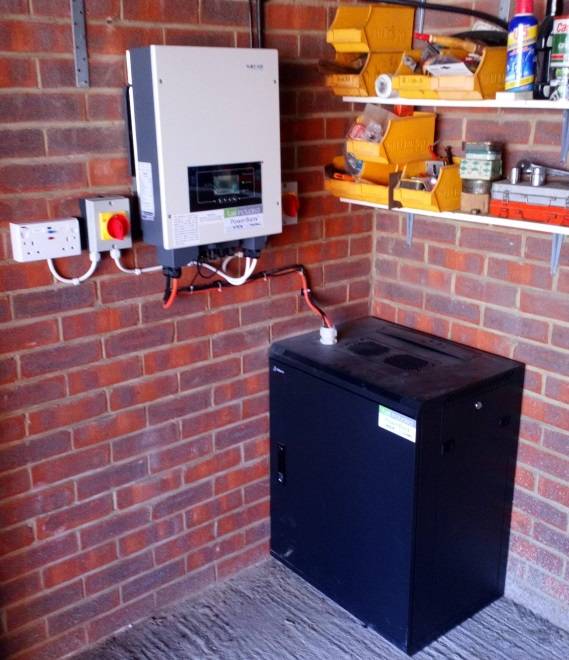
Peter’s PowerBanx home energy system in his garage just after installation (Image: Fuel Included)
He added an extra Pylontech US2000B battery; this upgraded Peter’s 3-battery PowerBanx X3 to an X4].
I have a 3.8 kW solar array, a 7.2 kWh PowerBanx X3 home battery and and a Vauxhall Ampera electric car and was happy with the whole setup.
I have only had the 7.2 kWh PowerBanx since the middle of August 2018 and was really pleased with it, however I wanted to add another 2.4 kWh Powerbanx unit, primarily to see if I could significantly increase the proportion of car charging I could achieve from my solar output during the sunniest months. From Aug to end Oct I managed approx. 40% solar miles. The existing 7.2 kWh PowerBanx was just about sufficient to run the house during Nov-Feb in the daytime by charging with Economy 7 overnight but an additional battery would give a bigger buffer for this also.
The existing 3 battery PowerBanx is in a standard enclosure that can take up to 6 batteries.
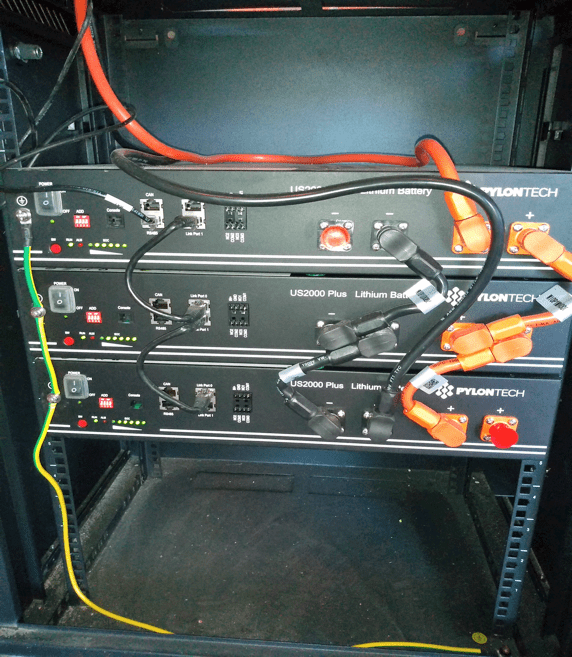
PowerBanx X3: 3 Pylontech batteries in a standard 15U enclosure (Image: P. Cittern)
I decided that the easiest way to add the new battery was to add it underneath the existing ones, keeping the existing hierarchy, i.e. the top battery as the ‘lead’.
The first thing to do was to go through the hard reset procedure, shutting down the Solar PV inverter, the AC power and the Sofar battery inverter and switching off all the batteries.
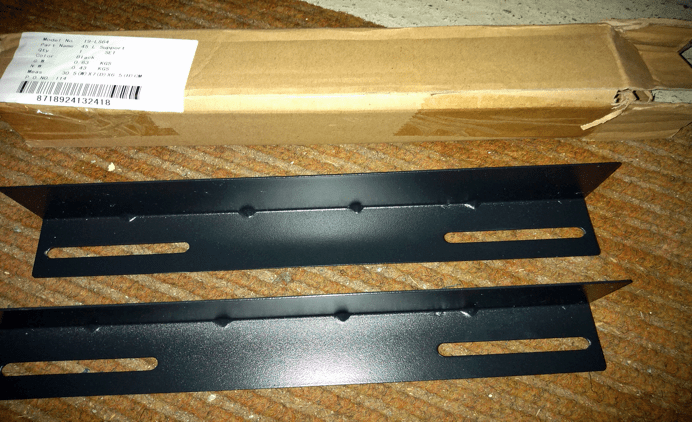
Shelf rails (Image: P. Cittern)
Two new shelf brackets were required. I deliberately positioned them such that the shelves cannot slip down, (the battery is very heavy!) so I positioned the fixing screws down at the bottom of a convenient slot (next photo).
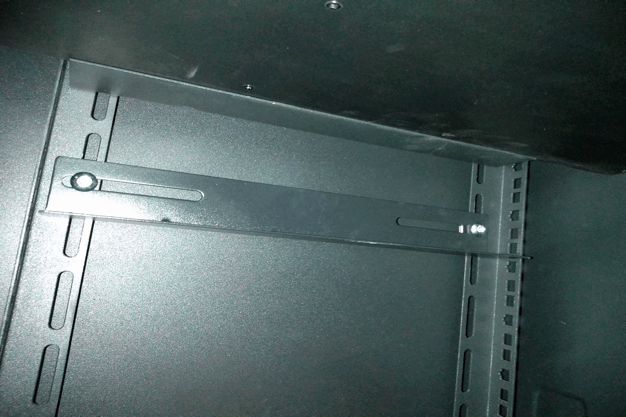
Positioning shelf (Image: P. Cittern)
The original placing of the shelves as measured by eye (see photo) seemed in line with the spacing of the previous batteries, but in fact I had to move the shelves down one more slot compared with the photo. Hence the bigger gap between the 3rd and 4th batteries (next photo).
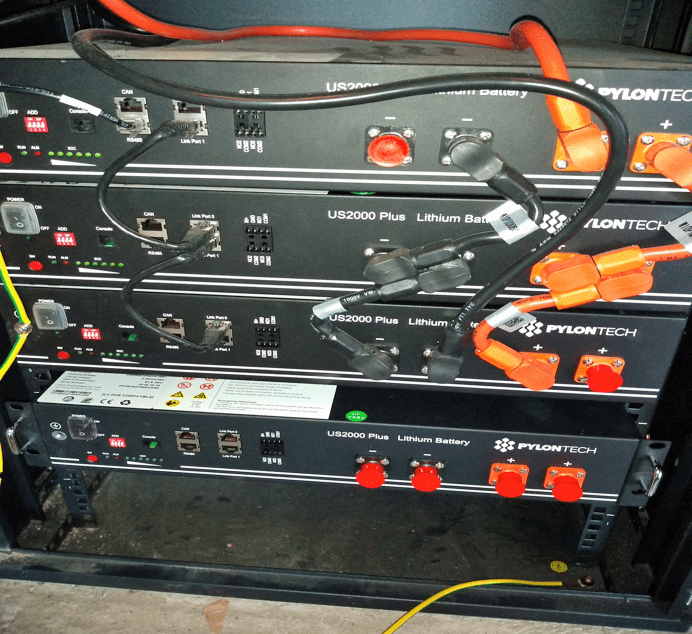
The new battery is extremely heavy so great care needs to be taken when manoeuvring it into place on the shelf. I ended up lying on the ground in order to manoeuvre the battery at eye level and keeping one arm under it to stop it falling down!
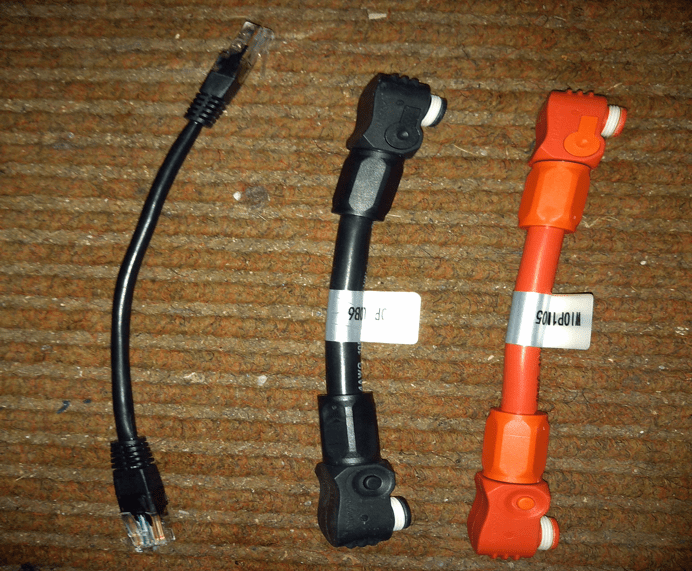
Battery connection cables (Image: P. Cittern)
Having got the battery physically in position on the shelf, the next job was to ‘daisy chain’ connect the new battery using the 3 new wires, plus adding the new battery into the existing earth wire.
The connectors make a satisfying ‘click’ as they are pushed into place.
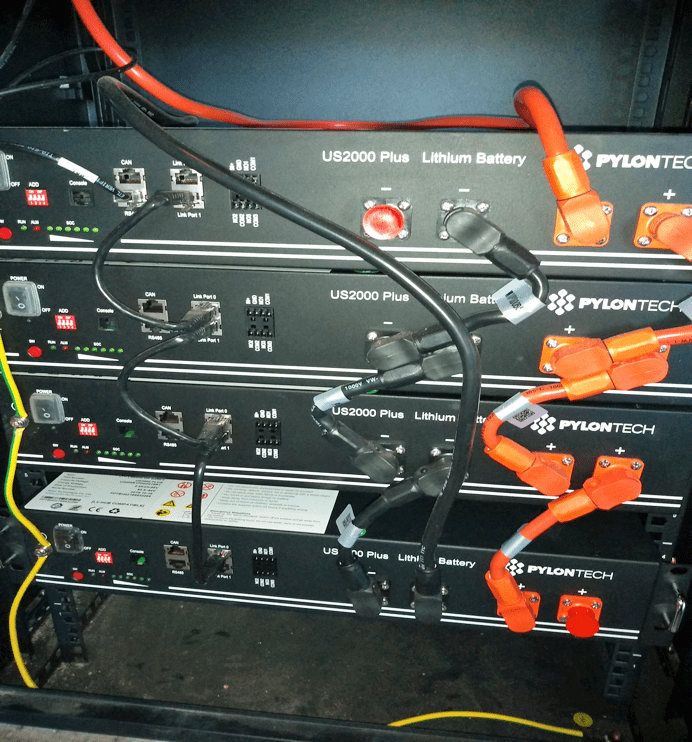
Wiring complete (Image: P. Cittern)
After a final check, the system was re-initialised as per the hard reset instructions.
Prior to the installation of the 4th battery, the state of each of the existing 3 batteries as indicated on the battery itself was showing 3 LEDs lit up, whereas the new battery as delivered was showing 4 LEDs. After charging overnight on E7, all the batteries had the same number of LEDs lit up and the following (very dull) day the number of LEDs slowly decreased in all the batteries in sync.
Also, investigating the Solarman software the next day and calculating the amount of kWh required to charge the new system, all seemed in order. I’ve been able to calculate the approx. amount of units it took to fill the battery (to 90%) at 9.6 kWh vs the same calcs for the 2 days before at 7.2 kWh. All the numbers are very close to theory, so I’m happy with that. The system seems to cope with the additional battery without further modification; in particular it seems that a firmware upgrade is not mandatory.
I am really pleased with the added capacity with far less rapid swings up and down of the charge level. It should be more stable and more usable, hopefully especially in the spring and summer for car charging.
Peter Cittern, Bristol, February 2019



